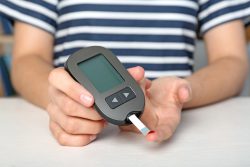 A recent report from the CDC reveals a troubling increase in prediabetes among U.S. adolescents, raising alarms about the health of American youth. In 2023, nearly one in three U.S. teens aged 12 to 17 was diagnosed with prediabetes. This is a warning sign for diabetes, a condition where blood sugar levels become excessively high. It is marked by mildly elevated blood sugar, signaling a risk of progressing to Type 2 diabetes.
A recent report from the CDC reveals a troubling increase in prediabetes among U.S. adolescents, raising alarms about the health of American youth. In 2023, nearly one in three U.S. teens aged 12 to 17 was diagnosed with prediabetes. This is a warning sign for diabetes, a condition where blood sugar levels become excessively high. It is marked by mildly elevated blood sugar, signaling a risk of progressing to Type 2 diabetes.
The CDC determined this figure by examining children with elevated blood sugar or glucose levels, but without a diabetes diagnosis. This rate is significantly higher than an earlier estimate, which indicated that about one in five children were affected by prediabetes. Experts attribute the data to a worrying increase in teen obesity, while emphasizing that not every teen with prediabetes will develop diabetes.
Prediabetes indicates significant stress on the pancreas, particularly the beta cells. Children with type 2 diabetes experience a faster decline in beta cell function compared to adults. A key challenge in this field is determining which children with prediabetes will progress to type 2 diabetes and which will not.
Type 2 diabetes in children is a highly aggressive condition and a critical one to prevent. The CDC report does not differentiate between precursors for type 1, type 2, or genetically linked diabetes. Certain genetic mutations causing diabetes are inherited, and type 1 and type 2 diabetes have distinct causes. Identifying whether a child has type 1 diabetes is crucial, as unrecognized low insulin levels can be life-threatening.
This data, combined with other findings, underscores the urgent need for increased scientific funding to better understand how to treat children effectively. More research is essential to learn how to prevent and successfully manage type 2 diabetes in kids who develop it.
To view the original scientific study click below:
In 2023, an estimated 8.4 million adolescents aged 12-17 years, or 32.7% of the US adolescent population, had prediabetes





